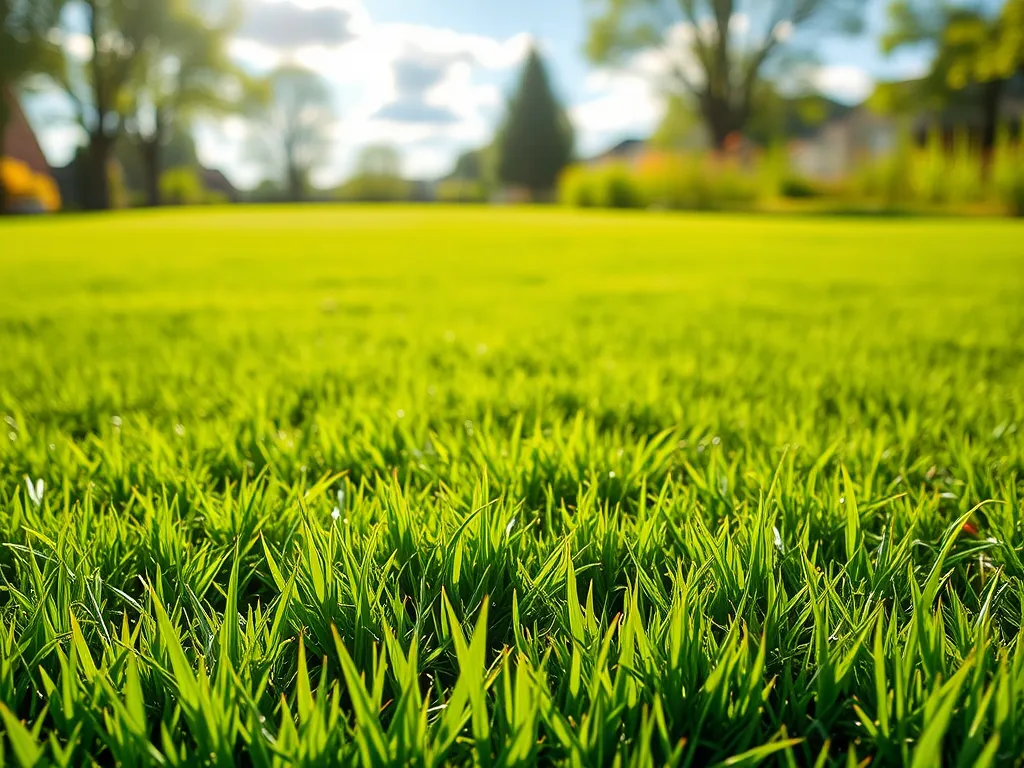Understanding Mowing Frequency for Optimal Lawn Growth

Lawn Care: Essential Practices for a Healthy Green Lawn
Lawn Care is a vital aspect of maintaining a beautiful and healthy yard. It involves a series of practices designed to ensure your grass grows lush and vibrant. A well-cared-for lawn not only enhances the aesthetic appeal of your property but also contributes to the environment by improving air quality and reducing soil erosion. To achieve optimal results in lawn care, homeowners must understand the key elements that influence lawn health, including mowing practices, watering, soil management, and pest control.
At the heart of effective Lawn Care is the understanding that proper mowing techniques can significantly impact the overall health of your lawn. Regular mowing encourages the grass to grow evenly and helps prevent the development of weeds. Moreover, mowing at the correct height ensures that the grass can photosynthesize efficiently, leading to stronger and deeper roots. Different grass species have varying requirements, making it crucial to adapt your mowing practices to match the specific needs of your lawn.
Another critical component of Lawn Care is the awareness of environmental factors that affect grass growth. Lawn care is not just a seasonal task but rather a year-round commitment. Factors such as rainfall, temperature, and humidity play a substantial role in how frequently you should mow your lawn. Additionally, understanding the life cycle of grass plants and the weeds that threaten them will help homeowners take proactive measures to maintain a healthy lawn.
Understanding lawn growth patterns can help homeowners tailor their maintenance practices for a healthier landscape.
In addition to mowing, fertilization, irrigation, and pest management should be part of a comprehensive Lawn Care strategy. Regular fertilization provides the essential nutrients that grass needs to thrive, while efficient watering techniques, like deep watering and using soaker hoses, help maintain soil moisture without oversaturating. Understanding the pest dynamics in your lawn can also lead to better pest control methods, allowing for minimal disruption to the grass while keeping it healthy and flourishing.
The ideal grass blade length ensures optimal photosynthesis and a lush, vibrant lawn throughout the season.
Ultimately, Lawn Care is more than just cutting grass; it’s about developing a holistic approach that incorporates various techniques and practices. By transforming your lawn into a green oasis, not only will you enhance your property value, but you will also contribute positively to your community and the environment as a whole.
Mowing Frequency: Key to a Healthy Lawn
Optimal mowing frequency is crucial for maintaining healthy lawns. Most grass types grow rapidly during the spring and early summer, requiring more frequent mowing (approximately once a week) during these peak growth periods. As temperatures cool in the fall, mowing can often be reduced to every two weeks.
Proper mowing height adjustment is crucial for preventing lawn diseases and promoting vigorous grass growth.
Different grass types have unique mowing frequency needs. For instance, cool-season grasses such as Kentucky bluegrass thrive in cooler temperatures and may require weekly mowing during their peak growth. In contrast, warm-season grasses like Bermuda can handle longer intervals between mowing as their growth slows in cooler months.
Seasonal considerations can dictate your mowing schedule as well. During periods of significant growth due to wet conditions in the spring, you may find yourself mowing more frequently. Conversely, in hot, dry summer months, you might extend your mowing intervals, as grass growth slows and conservation becomes key.
Understanding Lawn Growth Factors
Mowing plays a crucial role in grass health. Regular mowing encourages denser growth by stimulating the grass to produce lateral shoots. This can result in a thicker lawn that is better equipped to outcompete weeds and resist pests.
Mowing is also a key player in weed prevention. By keeping your grass at the appropriate height, you effectively shade out weed seeds and limit their ability to germinate. Proper mowing practices can thus help maintain turf density and prevent the encroachment of unwanted vegetation.
Weather conditions have a significant influence on lawn growth. Factors such as rainfall, sunlight, and seasonal temperature shifts determine how quickly grass grows. Monitoring these conditions can help homeowners adjust their mowing frequency accordingly to keep the lawn healthy and vibrant.
Best Mowing Practices
Techniques for even mowing include using a sharp mower blade to ensure a clean cut, which reduces stress on the grass. Mowing in different directions each time (such as alternating between horizontal and vertical mowing) can help the grass stand upright and promote even growth.
The best time to mow your lawn is early in the morning or late in the afternoon when temperatures are cooler. This reduces stress on the grass and prevents moisture loss due to evaporation. Avoid mowing during the hottest parts of the day or when the grass is wet, as it can lead to uneven cuts and clumping.
Choosing the right tools and equipment for effective mowing, like a self-propelled lawn mower for larger areas or a reel mower for smaller residential lawns, can significantly impact the quality of your cut. Regular maintenance of your mowing equipment ensures effective performance and longevity.
Grass Types and Mowing
Different grass types have specific mowing needs. Cool-season grasses, such as tall fescue, prefer a height of around 3 to 4 inches, while warm-season grasses like zoysia thrive at a shorter height of about 2 to 3 inches. It’s important to know the specific height requirements for the grass in your lawn to ensure ideal growth.
The effect of mowing frequency on turf qualities is evident in how frequently you mow and maintain your lawn. Regularly mowing encourages thicker grass, which can help with heat and drought tolerance, providing more resilient turf under stress.
Choosing the right grass type that matches your mowing schedule can enhance your lawn maintenance efforts. For busy homeowners, opting for drought-resistant grass varieties can reduce the need for frequent mowing and watering, making lawn care easier.
Lawn Care Maintenance: Beyond Mowing
Fertilization is essential alongside mowing. Applying fertilizers at the beginning of the growing season ensures that your lawn has the nutrients it needs to recover from winter and thrive throughout the warmer months.
Irrigation strategies can complement your mowing frequency. Implementing deep watering techniques ensures that grass roots grow deeper while avoiding overwatering, which can lead to fungal diseases and a weak lawn.
Pest control is another essential aspect of lawn care that interacts with mowing habits. Regular mowing can help control pest populations, while certain weed preventatives can be applied alongside lawn maintenance routines to create a healthy barrier against harmful insects.
